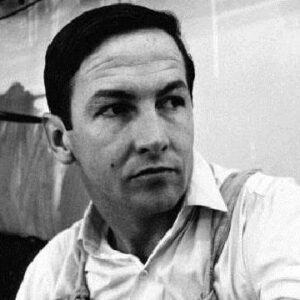Robert Rauschenberg, a prominent artist noted for his artistic breakthroughs and unconventional approaches in the creation of works of art, was one of the pioneers in the development of pop art in the 1960s. He was a painter, graphic designer, and sculptor who was well renowned for his “combines,” which were paintings and sculptures combined. He is credited with coining the word to characterize his own works, which consisted of paintings applied to commonplace items such as pictures, clothing, and other three-dimensional objects. Through his works, he attempted to bring art and ordinary life together. Photography, printmaking, and papermaking were all skills that the creative artist possessed. Josef Albers, his painting instructor at Black Mountain College, was said to have had an indirect influence on his paintings. Albers was a severe teacher who wanted his students to follow the traditional norms of art; Robert, on the other hand, opted to do the exact opposite—he transformed the way art was created in 1960s America. His Neo-Dadaist approach, along with that of painter Jasper Johns, is recognized with making a significant contribution to pop art in America. This eccentric artist was known for making combines out of trash and other waste goods he collected from the side of the road!
Childhood and Adolescence
Milton Ernest Rauschenberg was the son of Dora Carolina and Ernest R. Rauschenberg. He came from a mixed ancestry family.
From an early age, he was drawn to the arts and studied at the Kansas City Art Institute before moving on to the Academie Julian in France. He enrolled at Black Mountain College in North Carolina in 1948.
In 1949, he became a member of the Art Students League in New York, where he studied with Vaclav Vytlacil and Morris Kantor until 1952. Knox Martin and Cy Twombly were among the artists he met there.
Career of Robert Rauschenberg
From the beginning, he was an unorthodox artist. In 1951, he had his first solo exhibition at the Betty Parsons Gallery. During the same year, he began creating “White Paintings,” which appeared to be plain white canvas. He also created single-color works known as “Black Paintings.”
By 1953-54, he had begun work on the “Red Paintings.” Multiple types of red paint were applied to a canvas to which materials such as wood, nails, newspaper clips, and other items were connected.
He created a unique art form known as the “combines” during the 1950s. He included rubbish and other waste things collected from the streets into his work. He intended to give existing, “regular” objects new meanings.
By combining sculpture and painting, he blurred the lines between the two mediums. This category includes his works from 1954 through 1962.
‘Bed,’ one of his first collaborations, was simply formed by dropping red paint over a quilt, which he created in 1955. The piece was viewed as a symbol of violence and rape by art critics.
Critics attempted to read his combines based on their shape, color, texture, and other characteristics at first, but it became increasingly difficult to decipher the concealed symbolic messages in his work as time went on.
He developed sets and costumes for Merce Cunningham, Paul Taylor, and Trisha Brown beginning in the early 1950s. During the 1960s, he was a part of the radical theatre experiments.
In 1965, he was commissioned by ‘Life’ magazine to create a modern inferno. In his art, he depicted the tragedies of wars, racial atrocities, neo-Nazism, and environmental disasters.
He continued his experimental works into the 1970s and 1980s. He was a really insightful person who did things his own way. Several career retrospectives, including those hosted by the National Collection of Fine Arts and the Solomon R. Guggenheim Museum, were held over these decades.
In 1984, at the United Nations, he introduced the Rauschenberg Overseas Culture Interchange (ROCI). As a result, he embarked on a seven-year trip through 10 nations, including Mexico, Chile, Tibet, Japan, Cuba, and Malaysia, where he left parts of his work to promote world peace.
In 1990, he founded the Robert Rauschenberg Foundation (RFF) to raise awareness about environmental, humanitarian, and world peace issues. He also founded Change, Inc. to provide financial assistance to visual artists in need.
Major Projects of Robert Rauschenberg
He is widely known for co-founding the 1960s pop artist movement with Jasper Johns. He created a new art form known as the “combine,” which incorporates unusual daily objects such as wheels, pins, garments, and paper cuttings into paintings.
Achievements & Awards
He was awarded the National Medal of Arts in 1993.
In 1995, he received the Leonardo da Vinci World Award of Arts for his contributions to meaningful art throughout a four-decade period.
Personal History and Legacy
In 1950, he married fellow artist Susan Weil and had a son the following year. Soon after, in 1953, the couple divorced.
He was linked to painters Cy Twombly and Jasper Johns, according to reports.
He died in May 2008, at the age of 82, of heart failure. On the day of what would have been his 83rd birthday, a memorial show was staged at the Guggenheim Museum on October 22, 2008.
Estimated Net Worth
Robert is one of the wealthiest painters, as well as one of the most popular. Robert Rauschenberg’s net worth is estimated to be $1.5 million, according to Wikipedia, Forbes, and Business Insider.


